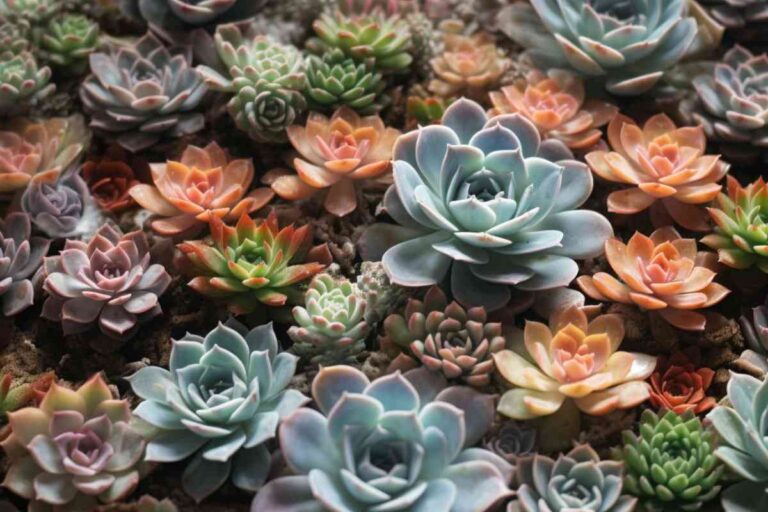Galanthus Blewbury Tart: A Delicious Recipe for Springtime
Understanding Galanthus Blewbury Tart
If you are a snowdrop enthusiast, you must have heard of Galanthus Blewbury Tart. This double snowdrop variety is a popular choice among gardeners, thanks to its unique and attractive features. In this section, we will discuss what makes this snowdrop special and how to best care for it.
Galanthus Blewbury Tart is a cultivar of Galanthus nivalis, the common snowdrop. It was first discovered by Alan Street, an English snowdrop expert and founder of the Avon Bulbs nursery. The Blewbury Tart snowdrop is characterized by its dark green inner rosette and green inner segments, which are slightly elongated and twisted, giving it a unique look.
One of the reasons why Blewbury Tart is so popular among snowdrop enthusiasts is its ability to naturalize quickly. This means that it will multiply and spread over time, forming a beautiful carpet of snowdrops in your garden. However, it is important to note that Blewbury Tart prefers well-drained soil and partial shade, so make sure to plant it in a suitable location.
When it comes to caring for Blewbury Tart, it is important to keep the soil moist but not waterlogged. You can also add a slow-release fertilizer to the soil in the fall to provide the plant with the necessary nutrients. In addition, it is recommended to divide the bulbs every few years to prevent overcrowding and maintain the health of the plant.
In conclusion, Galanthus Blewbury Tart is a unique and beautiful snowdrop variety that is easy to care for and will naturalize quickly in your garden. By following the tips outlined in this section, you can ensure that your Blewbury Tart snowdrops thrive and continue to bring joy to your garden for years to come.
Cultivation and Propagation
Ideal Growing Conditions
Galanthus Blewbury Tart is a beautiful snowdrop plant that can be grown in a variety of conditions. To ensure the best growth and blooming, it is important to select the right location for planting. The plant prefers partial shade to full sun exposure, and it is recommended to plant it in humus-rich, well-drained soil. The soil should be moist but not waterlogged, and it should be kept moist during the growing season.
Snowdrop cultivation is best done in the summer months, and planting should be done in the open frame or in containers. When planting in the open frame, it is recommended to plant in groups of 10 or more bulbs, spaced about 5-10 cm apart. When planting in containers, use a good quality potting mix, and plant bulbs at the same depth as they would be planted in the ground.
Propagation Techniques
Galanthus Blewbury Tart can be propagated through seed or bulb division. Seed propagation is a slow process, and it can take up to 3 years for the plant to reach maturity. Bulb division is the most common method of propagation, and it is best done in the summer months when the foliage has died back.
To divide the bulbs, carefully dig up the clump and separate the bulbs by gently pulling them apart. Each bulb should have its own roots and foliage. Replant the bulbs immediately, spacing them about 5-10 cm apart. It is recommended to divide the clumps regularly to spread out the progeny of your original planting, and to ensure continued growth and blooming.
Overall, Galanthus Blewbury Tart is a beautiful and easy-to-grow plant that can add a touch of elegance to any garden. With the right growing conditions and propagation techniques, you can enjoy the beauty of this snowdrop plant for years to come.
Planting Galanthus Blewbury Tart
Galanthus Blewbury Tart is a beautiful and unique snowdrop variety that can add a touch of elegance to any garden or container. Here are some tips for planting Galanthus Blewbury Tart:
Planting in Gardens
- Choose a suitable location: Galanthus Blewbury Tart prefers well-drained soil and partial shade. Find a spot in your garden that meets these requirements.
- Prepare the soil: Dig a hole that is two to three times the size of the bulb. Mix some compost and sand into the soil to improve drainage and add nutrients.
- Plant the bulbs: Place the bulbs in the hole with the pointed end facing upwards. Cover the bulbs with soil and gently pat it down.
- Water the bulbs: Give the bulbs a good watering to help settle them into the soil.
- Mulch the area: Add a layer of mulch over the planting area to help retain moisture and regulate soil temperature.
- Care for the plants: Galanthus Blewbury Tart requires minimal care. Water the plants during dry spells and remove any dead leaves or flowers.
Container Planting
-
Choose a container: Select a pot that is at least 6 inches deep and has drainage holes.
-
Prepare the soil: Fill the container with a well-draining potting mix. Add some sand or perlite to improve drainage.
-
Plant the bulbs: Place the bulbs in the container with the pointed end facing upwards. Cover the bulbs with soil and gently pat it down.
-
Water the bulbs: Give the bulbs a good watering to help settle them into the soil.
-
Place the container: Find a spot in your garden that receives partial shade. Galanthus Blewbury Tart does not tolerate full sun well.
-
Care for the plants: Water the plants regularly to keep the soil moist but not waterlogged. Fertilize the plants once a month with a balanced fertilizer.
By following these simple steps, you can plant and grow Galanthus Blewbury Tart in your garden or container. Don’t wait any longer and place your order today to add this stunning variety to your snowdrop collection.
Garden Types and Locations
When it comes to galanthus blewbury tart, this beautiful plant can thrive in a variety of garden types and locations. Here are some suggestions for where you can plant this stunning flower.
Informal and Rock Gardens
Galanthus blewbury tart is a perfect addition to informal and rock gardens. These types of gardens are often designed to look natural and unstructured, and galanthus blewbury tart fits in perfectly with this aesthetic. When planted in an informal garden, galanthus blewbury tart can add a touch of elegance and charm to the space.
Rock gardens, on the other hand, are ideal for galanthus blewbury tart because they mimic the plant’s natural habitat. Galanthus blewbury tart is a native of woodland areas, so planting it in a rock garden can create an environment that is similar to its natural habitat. Plus, its delicate beauty can provide a lovely contrast to the rugged rocks and stones in the garden.
Courtyard Gardens
Galanthus blewbury tart is also a great choice for courtyard gardens. These types of gardens are typically small and enclosed, making them perfect for container plants like galanthus blewbury tart. The plant’s small size and low maintenance requirements make it an ideal choice for courtyard gardens.
In addition to being a great choice for container plants, galanthus blewbury tart can also be used to create lovely flower borders, beds, and banks. Its low-growing habit makes it an excellent choice for slopes and ground cover, and it can be used for underplanting in larger gardens.
Overall, galanthus blewbury tart is a versatile and beautiful plant that can thrive in a variety of garden types and locations. Whether you’re looking to add a touch of elegance to an informal garden or create a stunning display in a courtyard garden, galanthus blewbury tart is an excellent choice.
Maintenance and Care
Taking good care of your Galanthus Blewbury Tart will ensure that it thrives and produces beautiful flowers every year. Here are some tips to help you maintain and care for your plant:
Pruning
Galanthus Blewbury Tart does not require much pruning. However, you should remove any dead or damaged leaves as soon as you notice them. This will help prevent pests and diseases from spreading to healthy parts of the plant. You may also want to remove any spent flowers to keep the plant looking tidy.
Pest and Disease Control
Galanthus Blewbury Tart is generally a hardy plant that is not susceptible to many pests or diseases. However, you should keep an eye out for the narcissus bulb fly, which can cause significant damage to the bulbs. If you notice any signs of infestation, such as wilted leaves or bulbs that have been chewed on, you should remove the affected bulbs and dispose of them properly.
Another common problem that can affect snowdrops, including Galanthus Blewbury Tart, is snowdrop grey mould. This fungal disease can cause the leaves and flowers to turn brown and mushy. To prevent the spread of this disease, make sure to plant your snowdrops in well-draining soil and avoid overwatering.
In summary, maintaining and caring for your Galanthus Blewbury Tart is relatively easy. Regularly remove any dead or damaged leaves, and keep an eye out for pests and diseases. By following these simple steps, you can enjoy beautiful blooms from your Galanthus Blewbury Tart for years to come.
Additional Information
Galanthus Blewbury Tart is a cultivar of the common snowdrop, Galanthus nivalis. This cultivar is known for its distinct and unique appearance, with a double set of petals that give it a fuller look compared to the traditional snowdrop.
When it comes to height, Galanthus Blewbury Tart typically grows up to 6 inches tall. This makes it a great option for planting in rock gardens, as well as in the front of garden borders.
In terms of hardiness, Galanthus Blewbury Tart is a tough and resilient plant that can survive in a range of climates. It is hardy to USDA zones 3-9, which means it can tolerate both cold winters and hot summers.
Bloom time for Galanthus Blewbury Tart typically occurs in late winter or early spring, making it one of the first flowers to bloom after winter. This makes it a popular choice for gardeners who want to add a splash of color to their garden early in the season.
Galanthus Blewbury Tart is a versatile plant that can be grown in a variety of settings. It can be grown in a cottage garden, in the city, or even on a patio in a container. It pairs well with other early blooming plants such as roses and shrubs.
If you’re looking to add Galanthus Blewbury Tart to your garden, it’s important to note that it prefers well-draining soil and partial shade. It is also important to note that snowdrops are toxic if ingested, so it’s important to keep them away from children and pets.
Overall, Galanthus Blewbury Tart is a beautiful and unique snowdrop cultivar that is sure to add interest and charm to any garden.
Frequently Asked Questions
What are some other snowdrop varieties besides Galanthus blewbury tart?
There are many other snowdrop varieties besides Galanthus blewbury tart, including Galanthus nivalis, Galanthus elwesii, Galanthus woronowii, and Galanthus plicatus. Each variety has its own unique characteristics and features.
Where can I purchase Galanthus reginae-olgae?
Galanthus reginae-olgae is a rare and sought-after snowdrop variety. You can purchase it from specialty nurseries and online retailers that specialize in rare and unusual plants.
Are there any snowdrop varieties that bloom in the autumn?
No, snowdrops are a winter-flowering bulb and do not bloom in the autumn. However, some varieties, such as Galanthus nivalis, may bloom as early as late winter or early spring.
What is the difference between Galanthus Lady Elphinstone and Galanthus blewbury tart?
Galanthus Lady Elphinstone and Galanthus blewbury tart are both snowdrop varieties, but they have some differences. Lady Elphinstone has larger flowers and a more upright habit, while Blewbury Tart has smaller flowers and a more spreading habit.
Where can I find snowdrops for sale?
You can find snowdrops for sale at specialty nurseries, garden centers, and online retailers that specialize in bulbs and rare plants.
Do Galanthus nivalis prefer sun or shade?
Galanthus nivalis prefers partial shade to full shade. They can tolerate some sun, but too much sun can cause the flowers to wilt and fade quickly.



